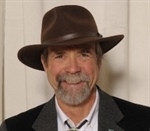Author, professor Gulliford to speak about ‘The Wooly West’

Event is set for March 29 at the Rio Grande County Museum
DEL NORTE — The Rio Grande County Museum recently announced that its first program of 2024 will highlight some of the origin stories about the San Luis Valley through innovative writing done by Andrew Gulliford, professor of History and Environmental Studies at Fort Lewis College in Durango.
Gulliford has been a patron of the Rio Grande County Museum for several years and has come to this location to research his book, “The Woolly West.” On March 29 from 5:30 to 7 p.m., the museum will feature stories about the sheepherders who were some of the first settlers of the San Luis Valley and other activities that will be announced as soon as details become available.
Gulliford teaches popular college courses in wilderness and environmental history and is the author of “America’s Country Schools”, “Sacred Objects and Sacred Places: Preserving Tribal Traditions”, and “Boomtown Blues: Colorado Oil Shale”, which won the Colorado Book Award. He also edited “Preserving Western History”, which was voted one of the best books on the Southwest by the Tucson-Pima County Library. His articles and photographs have appeared in national publications, including High Country News, Preservation, American Heritage, Colorado Heritage, and Montana.
He writes a regular monthly column titled “Gulliford’s Travels” for the Southwest Life section of the Durango Herald, and some essays are picked up by the “Writers on the Range” syndicated column of High Country News. Gulliford also writes for Inside/Outside Southwest and Mountain Gazette.
Gulliford has received the National Individual Volunteer Award from the U.S. Forest Service for wilderness education and a certificate of recognition from the Secretary of Agriculture for “outstanding contributions to America’s natural and cultural resources.”
The governor appointed Gulliford to two terms on the National Register of Historic Places Review Board for the State of Colorado. Gulliford also has his third federal appointment to the BLM’s Southwest Colorado Resources Advisory Council, where he represents environmental interests.
Gulliford has led tours across the West by canoe, raft, horseback, van, cruise ship, private train, and private jet for the Smithsonian Institution, the National Geographic Society, the National Trust for Historic Preservation, and the Colorado Historical Society.
He regularly donates tours to raise money for the Durango Adult Education Center, American Red Cross, Western Colorado Congress, Fort Lewis College Foundation, Rocky Mountain Public Broadcasting Service (PBS), and Great Old Broads for Wilderness.
In “The Wooly West”, Gulliford writes that the sheep industry was as integral to the history of the American West as any trail drive.
With vivid, elegant, and reflective prose, Gulliford explores the origins of sheep grazing in the region; the often-violent conflicts between the sheep and cattle industries; the creation of national forests; the segmenting of grazing allotments with the passage of the Taylor Grazing Act of 1934; the challenges of ecological change and the politics of immigrant labor; and the conflicts between hikers and dogs guarding flocks that have again put the sheep industry on the defensive.
Gulliford also weaves an account of his interaction with what he calls the “sheepscape”— the sheepherders’ landscape itself. Visiting with Peruvian immigrant herders and Mormon families who have grazed sheep for generations, he explores stone cairns assembled by shepherds now long gone and ponders the meaning of arborglyphs carved into unending aspen forests.
“The Woolly West” is the first book in decades devoted to the sheep industry and breaks new ground in the history of the Colorado Basque, Greek, and Hispano shepherding families whose ranching legacies continue to the present day.
Gulliford will also be selling and signing copies of “The Woolly West” and his other publications, including “Sacred Object and Sacred Places” and “Bears Ears: Landscape of Refuge and Resistance.”
For more information or to stay up to date on this and other events, visit www.riograndecountymusem.org or follow their Facebook page under Rio Grande County Museum and Cultural Center.



